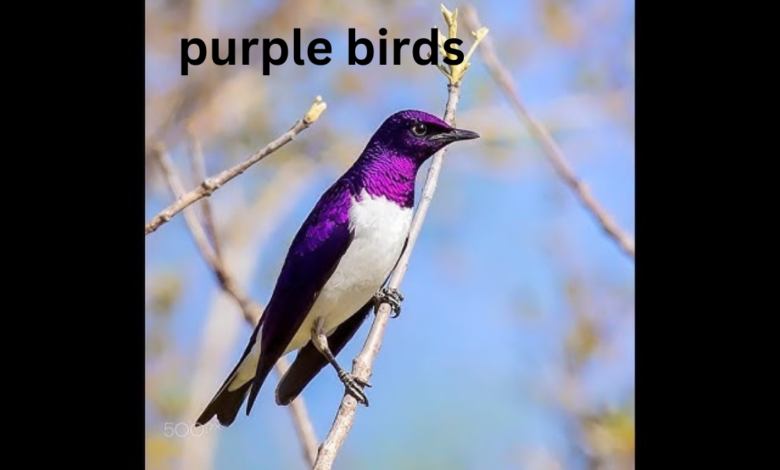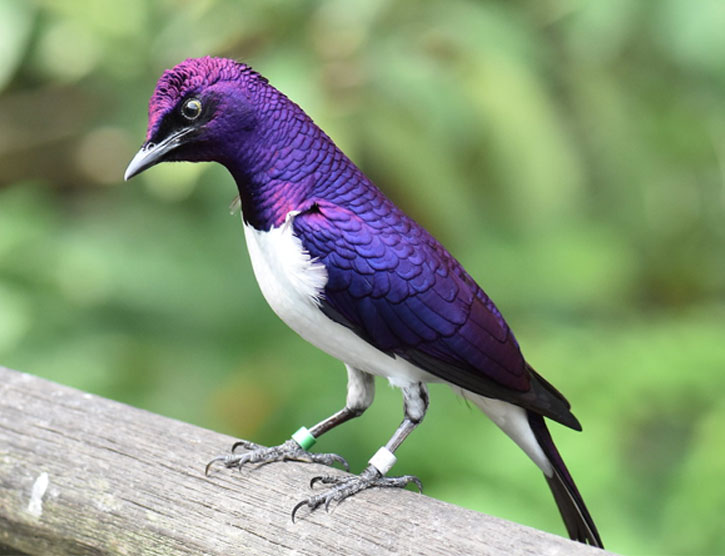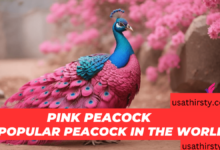Purple Birds: A Fascinating Journey into the World of Colorful Avian Wonders

Purple birds are some of the most striking and captivating creatures in the avian world. Their vibrant hues not only add splashes of color to the landscape but also spark curiosity and admiration among birdwatchers and nature enthusiasts alike. In this article, we’ll explore the various species of purple birds, their habitats, behaviors, and significance in ecosystems. From the enchanting Purple Martin to the elusive Violet-crowned Hummingbird, the world of purple birds is as diverse as it is beautiful.
The Allure of Purple in Nature

Color plays a purple birds significant role in the animal kingdom, especially among birds. Purple, often associated with royalty and mystery, serves various functions in avian life. For purple birds, this vibrant color can signify everything from sexual selection to camouflage. Understanding the role of color in nature enhances our appreciation of these stunning creatures.
Why Purple?
Purple pigments in birds are relatively rare, primarily due to the specific conditions required for their formation. Most purple hues result from structural coloration rather than pigments, meaning that the microscopic structures in feathers reflect light in a way that produces the rich violet tones we see. This intricate interplay of light and structure not only creates beautiful visual displays but can also play a role in communication among birds.
In many cases, the vibrant purple coloration is linked to mating rituals. Male birds often display their brilliant feathers to attract females, signaling good health and genetic fitness. This vibrant color can serve as an indicator of a male’s ability to survive and thrive in its environment, making it an important factor in mate selection.
Moreover, purple can also serve practical purposes beyond aesthetics. In certain species, the color can help with camouflage among specific floral backgrounds or foliage, allowing birds to avoid predators while resting or nesting. This fascinating duality of function adds layers of complexity to the existence of purple birds in their ecosystems.
Notable Purple Bird Species
The world boasts several remarkable purple bird species, each with its unique characteristics and adaptations. Let’s take a closer look at some of these captivating creatures.
Purple Martin
The Purple Martin is perhaps one of the most well-known purple birds in North America. Renowned for its iridescent purple-blue plumage, this bird is a favorite among birdwatchers. Purple Martins are social creatures that often nest in colonies, creating a lively atmosphere in the neighborhoods they inhabit.
These birds migrate from South America to North America for breeding season, showcasing a remarkable journey that spans thousands of miles. They prefer open areas near water bodies, making them adept at catching insects in flight. Their diet primarily consists of flying insects, and their agile aerial maneuvers make them exceptional hunters.
Interestingly, Purple Martins have a unique relationship with humans. In many regions, people erect special houses designed to attract these birds, enhancing their nesting success. This mutualistic relationship underscores the importance of human intervention in conservation efforts and highlights how communities can play a vital role in supporting wildlife.
Violet-crowned Hummingbird
The Violet-crowned Hummingbird is a small yet stunning bird found primarily in the southwestern United States and parts of Mexico. With its brilliant purple crown and greenish body, this species stands out among hummingbirds. Its vivid colors not only attract mates but also signal its health and vitality.
These tiny birds are known for their incredible agility and speed, capable of hovering in place while feeding on nectar from flowers. Their long, slender bills are perfectly adapted for accessing nectar deep within blooms, making them essential pollinators in their ecosystems. As they flit from flower to flower, Violet-crowned Hummingbirds contribute significantly to the reproduction of many plant species.
In addition to their role as pollinators, these hummingbirds have fascinating behaviors. They can often be seen engaging in aerial displays, showcasing their prowess and dazzling plumage. Observing their courtship rituals offers a glimpse into the intricate lives of these remarkable creatures, making them a favorite among birdwatchers.
Purple Gallinule
The Purple Gallinule is a striking waterbird found in wetlands across North America, Central America, and parts of the Caribbean. Its vibrant blue and green plumage, accented with bright yellow and purple, makes it a visually stunning addition to the avian world. Unlike most birds, the Purple Gallinule has long toes that allow it to walk on floating vegetation, a unique adaptation for life in marshy environments.
These birds are known for their adaptability and can thrive in various habitats, including swamps, marshes, and wet grasslands. Their diet consists mainly of plants, seeds, and small invertebrates, making them omnivorous foragers. The Purple Gallinule’s colorful appearance is complemented by its distinctive calls, often heard echoing through the wetlands.
Their secretive nature can make them challenging to spot, but their vivid colors serve as a reminder of the beauty that lies hidden within these lush environments. As habitat loss continues to threaten wetlands worldwide, the Purple Gallinule serves as a reminder of the importance of preserving these critical ecosystems.
The Role of Purple Birds in Ecosystems
Purple birds play vital roles in their ecosystems, contributing to various ecological processes that sustain biodiversity. Understanding their roles helps highlight the importance of conservation efforts aimed at protecting these unique species and their habitats.
Pollination and Seed Dispersal
Many purple birds, particularly hummingbirds, are crucial pollinators. As they feed on nectar, they transfer pollen from flower to flower, facilitating plant reproduction. This process is essential for maintaining healthy ecosystems, as many plants rely on these birds for successful pollination. The relationship between purple birds and flowering plants creates a delicate balance, showcasing the interdependence of species in nature.
In addition to pollination, some purple birds also assist in seed dispersal. As they consume fruits and berries, they inadvertently spread seeds across their habitats, promoting plant diversity. This process is especially important in forest ecosystems, where diverse plant communities contribute to overall ecological health.
Indicators of Environmental Health
Purple birds can also serve as indicators of environmental health. Their presence, population size, and behavior can reflect the overall state of their ecosystems. For instance, changes in the population of a particular purple bird species may signal alterations in habitat quality or food availability.
Conservationists often monitor bird populations as part of their efforts to assess ecosystem health. By focusing on specific species, including purple birds, researchers can gain insights into broader environmental trends, aiding in conservation planning and habitat restoration efforts.
Cultural Significance
Beyond their ecological roles, purple birds hold cultural significance in many societies. They often symbolize beauty, love, and freedom, appearing in art, literature, and folklore. The vibrant colors and unique behaviors of these birds capture the human imagination, fostering a deep appreciation for the natural world.
In many cultures, purple birds are seen as omens or symbols of good luck, influencing traditions and beliefs. Their presence in art and literature can evoke feelings of wonder and connection to nature, reminding us of the beauty that exists beyond urban environments.
Observing Purple Birds in the Wild
For birdwatchers and nature enthusiasts, observing purple birds can be a thrilling experience. Knowing where and how to find these stunning creatures enhances the enjoyment of birdwatching. Here are some tips for spotting purple birds in the wild.
Choosing the Right Location
When searching for purple birds, it’s essential to choose the right location. Many species prefer specific habitats, so understanding their preferred environments can increase your chances of spotting them. For example, if you’re looking for Purple Martins, seek open areas near water bodies, as they often nest in colonies in these settings.
For hummingbirds, visit gardens filled with nectar-rich flowers. Planting native flowering plants can attract these birds to your backyard, offering a wonderful opportunity for observation. Wetlands and marshes are ideal for spotting species like the Purple Gallinule, which thrive in these lush environments.
Timing Your Visits
Timing is crucial when it comes to birdwatching. Early morning and late afternoon are often the best times to observe birds, as they are more active during these periods. Additionally, during migration seasons, you may encounter an influx of purple birds as they pass through specific regions.
Being patient and quiet is essential for successful birdwatching. Many purple birds, such as the Violet-crowned Hummingbird, can be skittish and easily startled. Using binoculars or a camera with a zoom lens can help you capture stunning images without disturbing their natural behavior.
Engaging with the Birdwatching Community
Joining local birdwatching groups or communities can enhance your experience and knowledge of purple birds. These groups often organize field trips, workshops, and educational events, providing opportunities to learn from experienced birdwatchers. Connecting with others who share your passion for birds can enrich your understanding of avian life and conservation efforts.
Conservation Efforts and Challenges
Despite their beauty and ecological significance, many purple birds face challenges that threaten their survival. Habitat loss, climate change, and pollution are among the primary threats impacting these species. Understanding these challenges is crucial for fostering effective conservation efforts.
Habitat Loss
The destruction of natural habitats poses one of the most significant threats to purple birds. Urbanization, agriculture, and industrial development often lead to the loss of critical nesting and feeding grounds. Wetland drainage, deforestation, and the conversion of natural landscapes into agricultural fields can disrupt the delicate balance of ecosystems where purple birds thrive.
Conservation organizations and wildlife agencies are working to protect and restore these habitats. Creating protected areas, implementing sustainable land-use practices, and promoting awareness about the importance of conservation are vital steps in safeguarding the future of purple birds.
Climate Change
Climate change also poses a significant challenge to purple birds. Altered weather patterns can affect migration routes, breeding seasons, and food availability. For instance, shifting temperatures may lead to mismatches between the timing of flowering plants and the arrival of pollinators, impacting the entire ecosystem.
To combat climate change, efforts are underway to reduce greenhouse gas emissions, promote renewable energy sources, and enhance community resilience. Engaging in sustainable practices at the individual and community levels can contribute to the larger goal of mitigating climate change and its effects on wildlife.
Pollution and Pesticides
Pollution, particularly pesticide use, poses additional risks to purple birds. Chemicals used in agriculture can contaminate food sources and habitats, leading to declines in bird populations. Reducing pesticide use and promoting organic farming practices can help protect these avian species and their ecosystems.
Additionally, public awareness campaigns aimed at educating communities about the impact of pollution on wildlife can foster a sense of responsibility. Encouraging environmentally friendly practices can create a positive ripple effect in conservation efforts.
Conclusion: Celebrating the Beauty of Purple Birds
Purple birds are a testament to the beauty and complexity of nature. Their vibrant colors, unique behaviors, and vital roles in ecosystems make them fascinating subjects for study and observation. As we explore the world of purple birds, we gain insights into the interconnectedness of life and the importance of preserving our natural environments.
By understanding the challenges these species face and actively participating in conservation efforts, we can ensure that future generations will continue to enjoy the sight of these stunning birds. Whether through birdwatching, habitat restoration, or simply appreciating their beauty in art and literature, there are countless ways to celebrate and support the captivating world of purple birds.
So, the next time you spot a flash of purple in the sky or hear a melodious call in the distance, take a moment to appreciate the wonder of these extraordinary creatures. They are not just birds; they are symbols of resilience, beauty, and the intricate tapestry of life on our planet.
